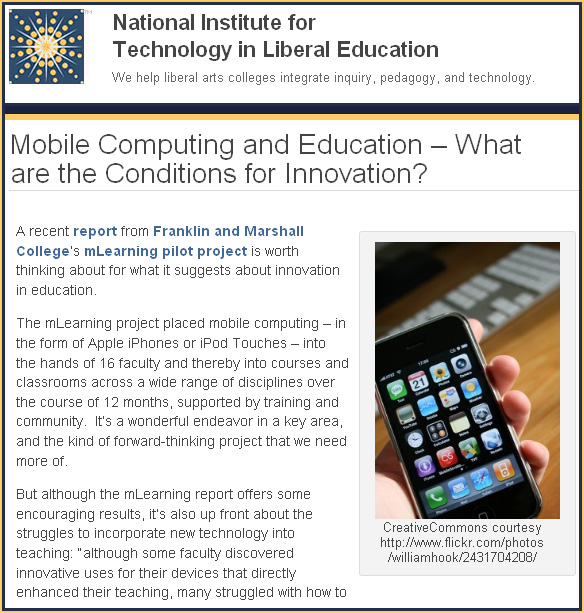The September 2010 issue of Academic Commons is now online.
“Charting the New Knowledge Terrain“ is our third collaborative issue with the National Institute for Technology in the Liberal Arts. Here you’ll find profiles of innovative projects taking place on NITLE-member campuses, written by the people who are making them happen.
In this issue, you’ll learn about:
* A collaborative website project produced by a professor, college students, and a community partner that helps parents make sense of school choice options in their area
* Creating simple animations with Google Earth to help students visualize landscapes as they existed thousands of years ago
* Creative problem-based projects in map-making that engage students in thinking about how to represent their own collective experiences with study abroad programs.Our next collaborative issue with NITLE will be published in spring 2011. The theme will be ‘Digital Humanities and the Undergraduate.’ For the most up-to-date information on NITLE’s Community Contribution Award program, please visit the NITLE website.
Enjoy!
The Editors at Academic Commons











